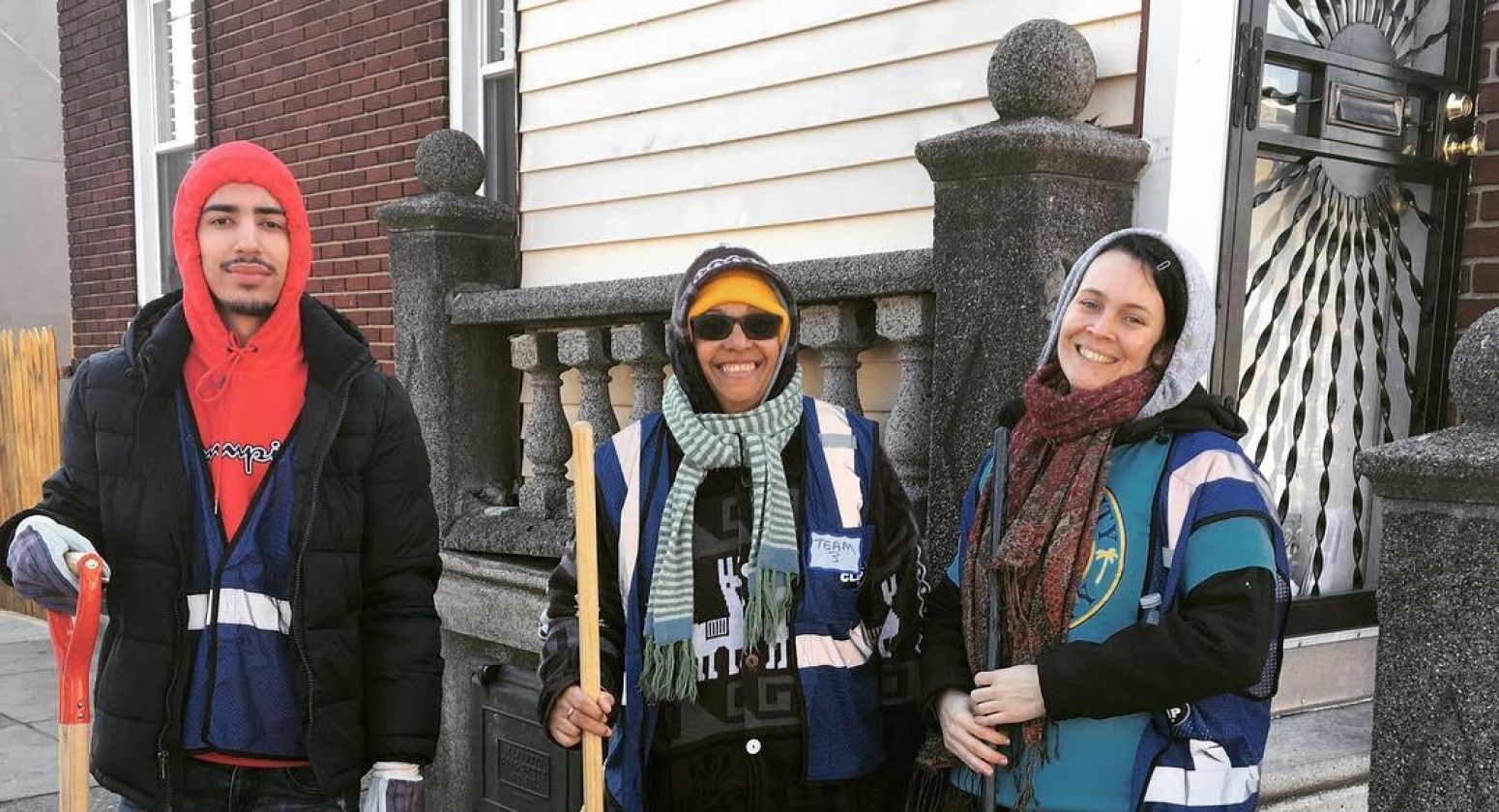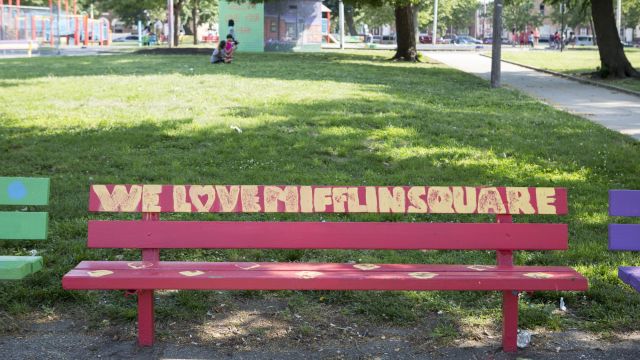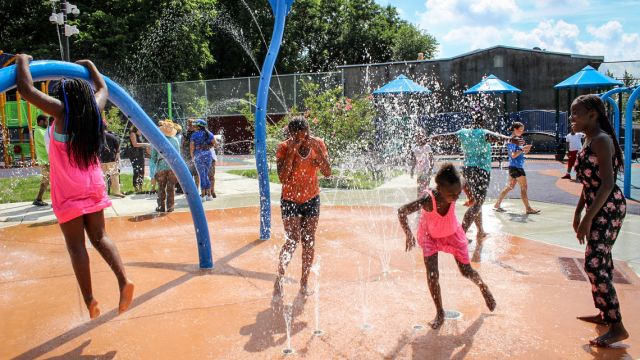Meaningful Community Engagement
Meaningful Community Engagement

How do neighborhoods rich with diversity engender a sense of belonging for everyone? How does a historic landmark demonstrate relevance to its current neighbors? And, how do communities retain their long-time residents when the neighborhood near a new public space starts to change? In each of these instances and many others, we have placed an emphasis on helping organizations find meaningful ways to engage with their communities through transformation of its public spaces.
Mifflin Square Park is a beloved space for its South Philadelphia community, which includes many recent immigrants. In 2016, the community group SEAMAAC (Southeast Asian Mutual Assistance Association Coalition) launched the “Making Room for Everyone” initiative with the William Penn Foundation’s support. SEAMAAC’s comprehensive and inclusive multi-year planning process to revitalize Mifflin Square has involved more than a dozen local organizations, as well as the collective brainstorming of nearly 1,000 community members who represent a wide spectrum of often marginalized neighbors of diverse cultures, ethnic backgrounds, languages, and ages.
Facilitated by SEAMAAC and Newark-based design firm Hector, the community-led planning process sought to engage residents where they are – including in the park itself, at churches, schools, youth soccer tournaments, senior groups, cultural events, and door-to-door. An ensuing conceptual plan was designed by local residents and calls for consolidated and improved play areas for all ages, a new sprayground and new play equipment for children, shaded sitting plazas, barbeques, and a large public park area where neighbors can come together. The plan also allows for additional features such as new bathroom facilities, meditation areas, peace and nature paths, and stage, and storytelling areas.
SEAMACC’s approach is an exceptional example of public space planning and community engagement, and the process attracted the support of the Philadelphia Parks & Recreation as well as interest from both local and state elected officials. By creatively engaging the community in meaningful ongoing planning for Mifflin Square, residents – many from disparate backgrounds – not only felt a sense of pride but also a pride of ownership as the park continues to evolve.
Along the banks of the Schuylkill River in Southwest Philadelphia, the historic Bartram’s Garden has been a center of horticulture and history since the late 18th century. A 45-acre National Historic Landmark, the site boasts an unrivaled plant collection and a commitment to protecting natural resources. However, in the past it also served as a barrier between its immediate neighbors and the waterfront.
Since 2015, the William Penn Foundation has supported the staff of Bartram’s Garden as they work to transform the relationship between the garden and nearby residents in Southwest Philadelphia. Over the past few years, Bartram’s Garden focused on listening and building trust through one-on-one and small group conversations and invited community leaders to participate in making the Garden a resource for the neighborhood. The Garden employs staff dedicated to establishing and strengthening relationships with neighbors, especially at Bartram’s Village, which is managed by the Philadelphia Housing Authority. Additionally, programs such as Royal By Nature, a summer afterschool program for local K-8 youth, have expanded and are run entirely by community leadership.
Bartram’s Garden has deepened connections in its neighborhood and in new communities arriving via the Schuylkill River Trail, focusing on art, watershed education, recreation, and youth. By engaging community leaders in making the Garden a resource for the neighborhood, Bartram’s has become an institution that’s increasingly embedded in its community, yielding new educational programs and a way for local residents and visitors to experience nature in a major metropolitan area.
While revitalization of public spaces and neighborhoods should be for the benefit of current residents, it can also be associated with gentrification and community displacement. HACE is an organization working to not only revive neighborhoods, but to also do it in a way that empowers communities to take charge of their own economic destinies.
With support from the William Penn Foundation in 2018, HACE is continuing its work through the planning of a new park at the end of North American Street. In the HACE tradition, the organization has emphasized the importance of community engagement and stewardship through its Livability Academy, which empowers neighbors by teaching community inclusion, investment, leadership, and more while promoting positive change for our future. In addition, by linking the planning of the park to existing housing and credit counseling programs, HACE hopes to ensure that residents will stay throughout a neighborhood’s transformation.
More Creative Communities Stories

Creating a World-Class Waterfront for Everyone
Learn More
The Importance of Public Space Maintenance: How Philly is Meeting an Existing Need
Learn More
